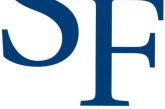
Google search “workplace leadership style” and you will find an array of results. The various styles can be grouped into one of three broad categories: control-based; connection-based; and change-based. Managers often make strategic and operational decisions based on either a call to control, a commitment to connect, or a conviction to change.
Control-based leadership emphasizes decision-making from the viewpoint of management. It typifies a command-and-control approach where the flow of information is usually “top-down” as opposed to “bottom-up.” Clear lines of authority are important within this context.
The connection-based style favors a consensus-driven approach to decision-making. Managers utilizing this style prioritize “connecting” with their employees through teamwork and collaboration. Relationships are the currency of success and considered indispensable.
Change-based leadership is focused on disrupting the status-quo and may favor a blended approach with both autocratic and democratic elements. Effective internal communication is vital and decisions may reflect both managerial dictates and “buy-in” from team members.
What leadership style works best in the workplace? The simple answer is “it depends” on the personalities involved. Everyone is unique and has a preferred method of receiving, processing, and communicating information. Managers who adjust their leadership style based on the personalities within their workforce will be more effective than those who do not.
The workplace is often a collection – or collision – of different personality types. A manager may want to learn about the personalities on their team and shape their leadership style accordingly. An assessment tool such as the Myers-Briggs Type Indicator ® (MBTI®) assessment is a popular instrument embraced by many businesses.
The MBTI® instrument is available in 29 languages and used by 88% of Fortune 500 companies in 115 countries. The Gainesville-based Center for Applications of Psychological Type (CAPT) has conducted research and education that supports the Myers Briggs assessment tool.
“The MBTI assessment tool is a way to understand your personality type,” said Rob Rothschild, Director of Marketing for CAPT. “Personality type, as defined by MBTI instrument, helps people understand how they take-in information, make decisions, and approach their inner and outer worlds,” added Mr. Rothschild.
“Now we know…and knowing is half the battle” is a famous public service announcement from the 1980s G.I. Joe cartoon series. Managers who invest in identifying the personalities within their workforce – and act on the information – will be better equipped to lead effectively.
“Personality type gives you a tool to understand and value everyone’s differences,” noted Mr. Rothschild. “Understanding personalities can help a manager shape communication with the people around them and make better decisions,” commented Mr. Rothschild.
Companies interested in having the MBTI® instrument administered in their workplace can either certify an employee or hire a consultant already certified. To learn about MBTI® Certification, visit https://mbtitraininginstitute.myersbriggs.org/. For finding MBTI® certified practitioners, visit http://www.mbtireferralnetwork.org/
A successful local employer utilizes personality assessment instruments and believes they are important management tools. Team Dynamo – Keller Williams Realty, a top producing real estate agency in the Gainesville region, uses the Color Code Personality Test and the Keller Williams Personality Assessment.
“A personality assessment is a resource to help understand your employees just below the surface,” said Kelly Junior, Director of Operations for Team Dynamo. “I can learn to adjust when dealing with employees on a sensitive topic.”
Personnel decisions are among the most important leadership decisions managers make in the workplace. Matching future employees with the right position can have a significant impact on company resources. A personality profile used properly could also help businesses reduce costs.
Ms. Junior said there is “value in matching personality with job function” as the largest HR expense can be finding, hiring, onboarding, and training employees.
“A personality profile can help an employer identify positions that are a right fit for a candidate, which can help save money by hiring the right people for the right role the first time,” noted Ms. Junior.
Whether a workplace leadership style should be control-oriented, connection-focused, or change-driven, should be shaped by the personalities of the team members. Managers who succeed at aligning their approach with the profile of their staff will be better positioned to achieve success.
By Kamal I. Latham




